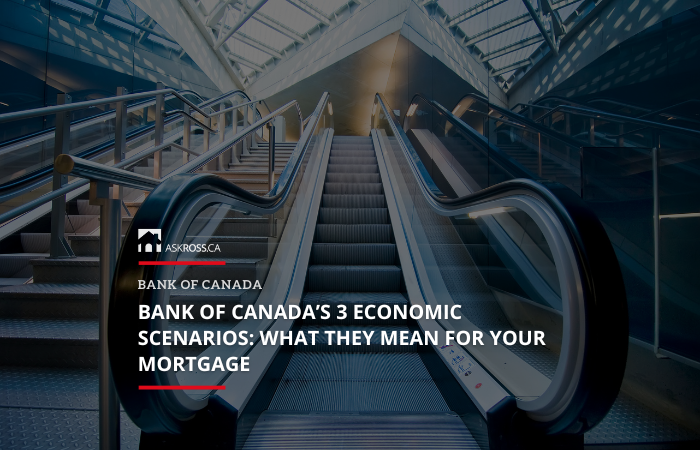
Published: July 31st, 2025 • Last Updated: July 31st, 2025
Author: Ross Taylor on AskRoss.ca
From Trade Wars to Rate Cuts: How Each Scenario Shapes Your Mortgage Strategy
Let’s start with the obvious: the Bank of Canada didn’t move rates yesterday.
No surprises there.
However, instead of offering its usual economic forecast this time around, the Bank of Canada did something different. It gave us three possible scenarios for how the Canadian economy might evolve—depending on what happens with U.S. tariffs on Canadian goods.
This matters because U.S. trade policy is a major wildcard, and it’s influencing everything from business investment to interest rates.
What stood out, though, was how clearly Governor Macklem and team signalled they’re no longer flirting with the idea of raising rates.
“If a weakening economy puts further downward pressure on inflation…there may be a need for a reduction in the policy interest rate.”
Translation: We’re not cutting now, but we’re thinking about it, and we want markets (and you) to know we’re thinking about it.
So where does that leave homebuyers and homeowners? Let’s dig in.
Jump to a specific section in this article ↓↓
- Why didn’t fixed rates react to the Bank of Canada’s statement?
- Will variable mortgage rates fall any time soon?
- Why is the BoC still cautious if inflation is easing?
- What are the Bank of Canada’s three economic scenarios—and how do they impact your mortgage strategy?
- Scenario 1: Things stay as they are (the “current tariff” scenario)
- Scenario 2: Tariffs get rolled back (the “de-escalation” scenario)
- Scenario 3: Tariffs get worse (the “escalation” scenario)
- So how should you choose a mortgage term in this environment?
- For borrowers with low risk tolerance and long-term plans
- For Canadians who need short-term mortgages
- What if you have or want a variable-rate mortgage?
- Bottom line: Choosing a mortgage that works for you
Don’t have time to read, but want the scoop? Check out our Google AI-generated podcast for this article 🙂
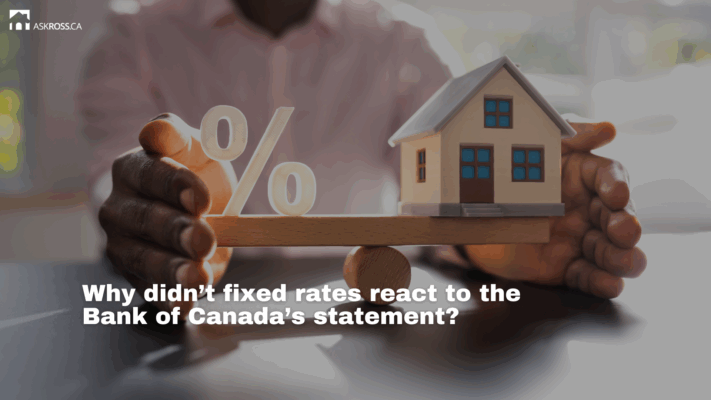
Why didn’t fixed rates react to the Bank of Canada’s statement?
Despite the dovish tone, Canadian bond yields barely budged after the 9:45 a.m. ET announcement. And that’s telling.
The market already saw this coming
The fact that yields stayed flat means traders had mostly priced in this non-event.
Even after the U.S. Federal Reserve made its hawkish announcement at 2:00 p.m., Canadian yields stayed in a narrow range.
In essence, markets shrugged. They weren’t expecting fireworks, and they didn’t get any.
So, for fixed mortgage rates, which are tied closely to the bond market, this decision didn’t move the needle.
↑↑ Back to the list at the top ↑↑
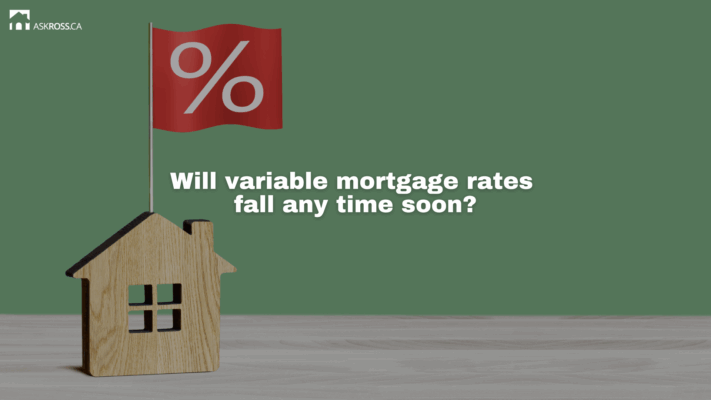
Will variable mortgage rates fall any time soon?
Short answer: Maybe, but slowly.
What the Bank thinks inflation is doing
There was a confusing moment in the BoC’s statement. Despite average core inflation running at 3.05%, the Bank said it believes “underlying inflation is estimated to be about 2.50%.”
Wait, what?
The Bank’s official trend measure shows 3.05%, but they’re asking us to believe it’s actually 2.50% beneath the surface. Without a clear explanation of how they calculate that, it’s hard not to raise an eyebrow.
But here’s the takeaway: The BoC believes inflation is cooling, just not as quickly as it wants. That’s why they’re not ready to cut yet, but they’re not ruling it out either.
The odds of a 25- to 50-bps cut over the next year remain on the table, but anything steeper seems unlikely unless the economy stumbles hard.
↑↑ Back to the list at the top ↑↑
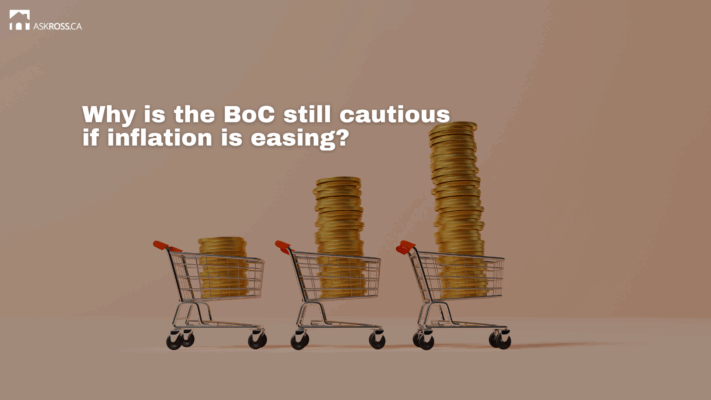
Why is the BoC still cautious if inflation is easing?
We find it interesting that the Bank continues to point to “excess supply” in the economy, softer unit labour costs, and a stronger Canadian dollar as reasons to believe inflation will fall.
All fair points. But here’s the catch:
Our economy keeps outperforming expectations
Despite all the talk about economic slack, the Canadian economy keeps surprising to the upside. And deficit spending remains high, which injects more money into the system, fuel for inflation if we’re not careful.
We also learned yesterday that Q2 exports fell 25%, and new tariffs are expected to hit our trading partners.
Yet, the BoC claims 95% of Canadian exports will still get tariff exemptions under CUSMA (Canada-United States-Mexico Agreement) if that holds, which would be great. But if not, rising tariffs could push prices up before they cool down.
Bottom line: the BoC says inflation isn’t running hot. But it also admits that the future is murky.
In fact, Governor Macklem didn’t even offer an economic forecast this time. Instead, they provided three economic scenarios related to Global trade and tariffs.
Essentially, the central bank is now steering the ship based entirely on the data in front of them, no bold assumptions, no long-range bets.
↑↑ Back to the list at the top ↑↑
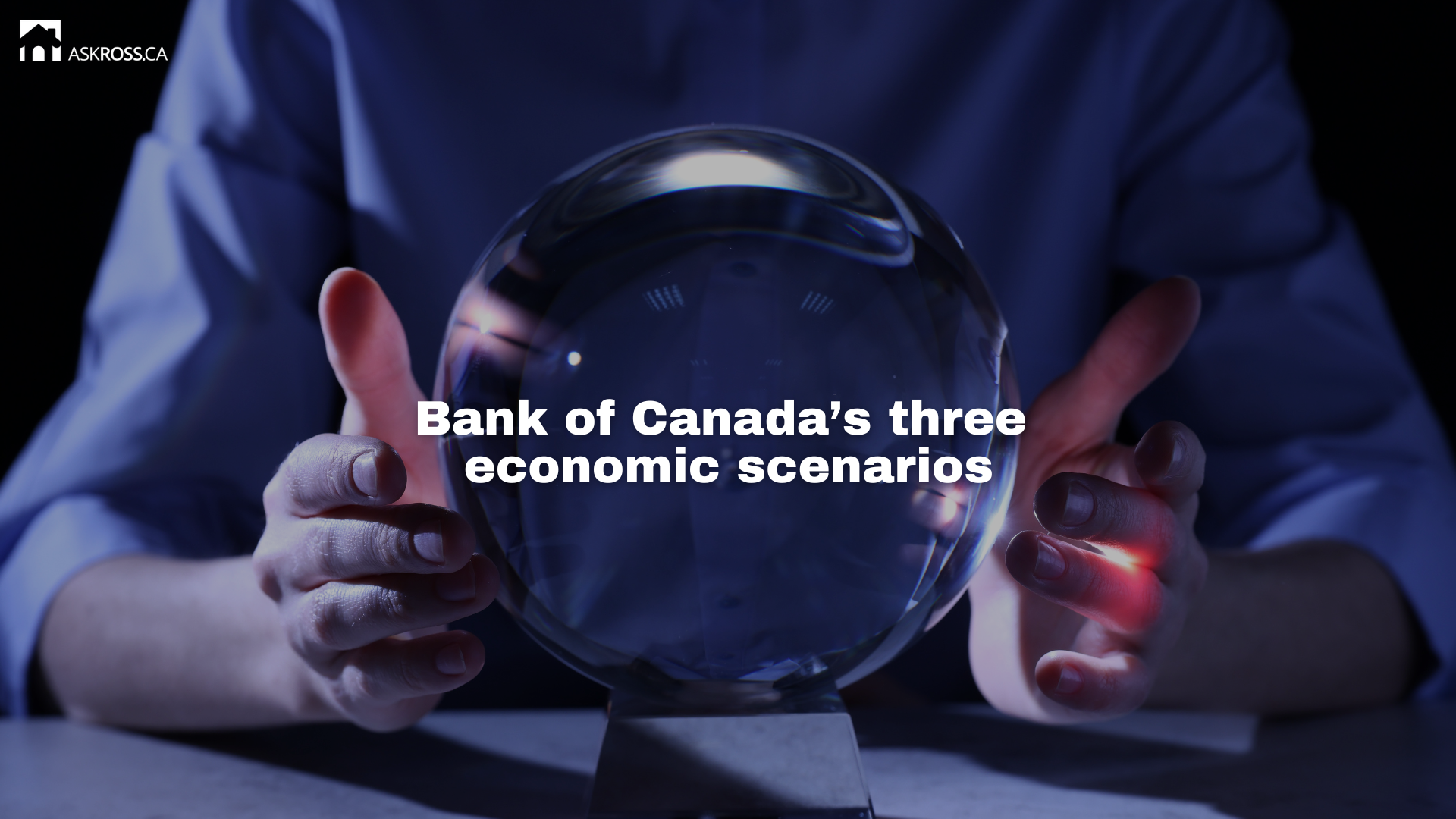
What are the Bank of Canada’s three economic scenarios—and how do they impact your mortgage strategy?
In a rare move, the Bank of Canada skipped the usual crystal-ball routine in its latest Monetary Policy Report. Instead of presenting a single forecast for growth and inflation, it laid out three potential scenarios, all hinging on the murky future of U.S. trade policy.
I’ve reviewed these scenarios carefully, and if you’re trying to decide on a mortgage, here’s what you need to know.
Scenario 1: Things stay as they are (the “current tariff” scenario)
This is the Bank’s base case. It assumes that the current tariffs between Canada and the U.S. stay in place, without getting better or worse.
What happens to the economy:
- After a weak spring, the Bank expects modest economic growth to return later this year—around 1% in the second half of 2025, and gradually picking up to 2% by 2027.
- But here’s the catch: because of tariffs and ongoing trade uncertainty, the overall economy could stay smaller than it would’ve been otherwise.
What happens to inflation:
- Overall inflation is sitting just below 2%, helped by the removal of the carbon tax.
- But the Bank thinks the real pressure is a bit higher—closer to 2.5%—driven by rising prices on non-energy goods.
- Housing costs (especially rent and mortgage interest) are still a big inflation driver, but they’re starting to cool.
What this means for your mortgage:
- If this middle-ground scenario holds, don’t expect big changes to interest rates anytime soon.
- Fixed rates might dip slowly, but probably not by much.
For many borrowers, a 5-year fixed rate still offers good value and protection if the economic recovery stays sluggish.
↑↑ Back to the list at the top ↑↑
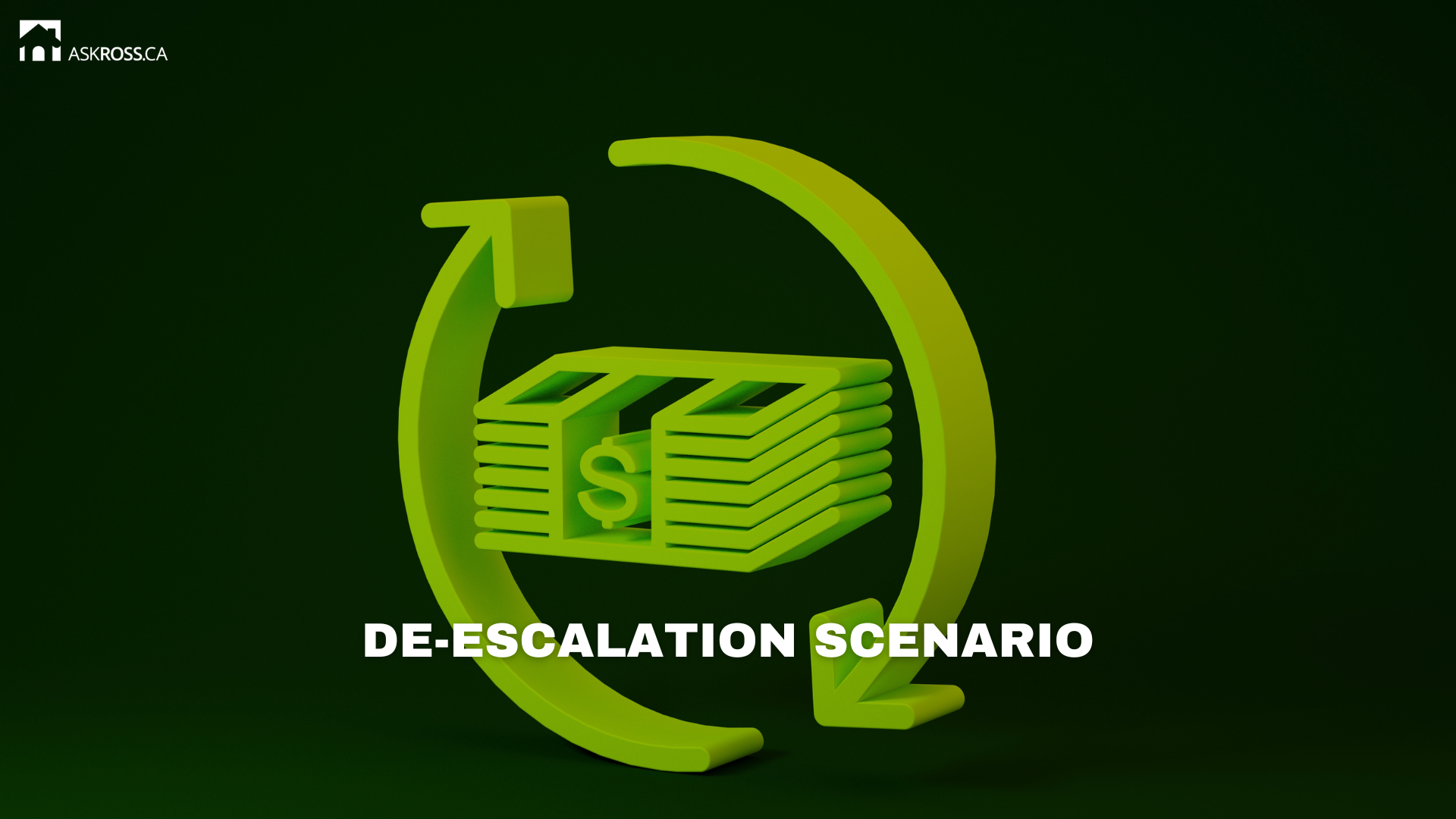
Scenario 2: Tariffs get rolled back (the “de-escalation” scenario)
This is the optimistic one. In this case, the U.S. pulls back on its tariffs and trade tensions ease.
What happens to the economy:
- Canadian exports and business investment bounce back.
- Economic growth improves faster and more strongly than in the base case.
What happens to inflation:
- Fewer trade-related costs mean inflation could stay steady—or even decline a bit.
- That gives the Bank of Canada more breathing room to cut interest rates further.
What this means for your mortgage:
- In this scenario, rate cuts could go deeper or happen sooner.
- That makes shorter-term fixed mortgages—like a 3-year fixed—more attractive.
Hybrid mortgages (part fixed, part variable) could also offer some upside if you want flexibility without going all-in on variable.
↑↑ Back to the list at the top ↑↑
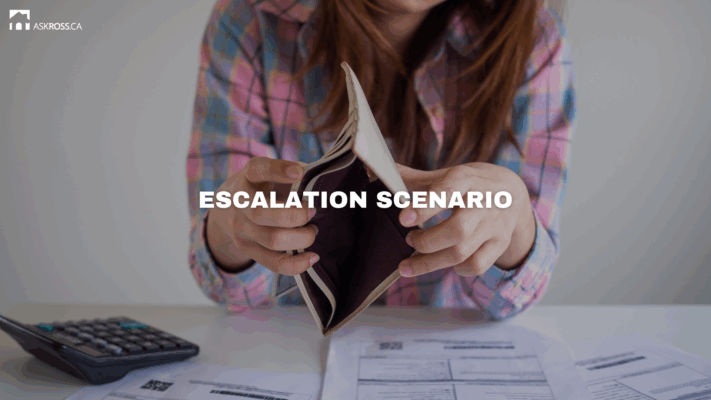
Scenario 3: Tariffs get worse (the “escalation” scenario)
This is the nightmare scenario—and the reason why the Bank of Canada is being so cautious right now.
What happens to the economy:
- New or higher U.S. tariffs lead to a sharp drop in Canadian exports, weaker business investment, and slower consumer spending.
- The economy could shrink, and job losses could follow—especially in trade-sensitive industries.
What happens to inflation:
- Even though the economy weakens, prices still rise. Why?
- Tariffs make goods more expensive.
- Businesses face higher costs and pass them on to consumers.
- This creates a tricky mix: slow growth + high inflation—not a fun place to be.
What this means for your mortgage:
- Variable rates become riskier in this environment.
- The Bank of Canada might have to hold—or even raise—rates to keep inflation in check.
- Fixed rates are your safe haven here, especially from lenders with fair penalty structures if you need to break your mortgage early.
↑↑ Back to the list at the top ↑↑

So how should you choose a mortgage term in this environment?
Mortgage shoppers are dealing with more fog than clarity right now.
When the central bank can’t offer a clear forecast, you know we’re deep into “it depends” territory.
So let’s break it down by the three main borrower types:
1. For borrowers with low risk tolerance and long-term plans
If you’re planning to stay put for at least five years (or keep your mortgage), a 5-year fixed mortgage from a fair-penalty lender is still the smartest move.
The hype around 3-year terms is fading,and frankly, there’s no strong reason to stray from the tried-and-true five-year option that most Canadians relied on before 2023.
Even if rates edge down, they likely won’t fall fast enough to make floating worthwhile—and if you break the mortgage early,you’ll be glad you dodged a nasty IRD penalty.
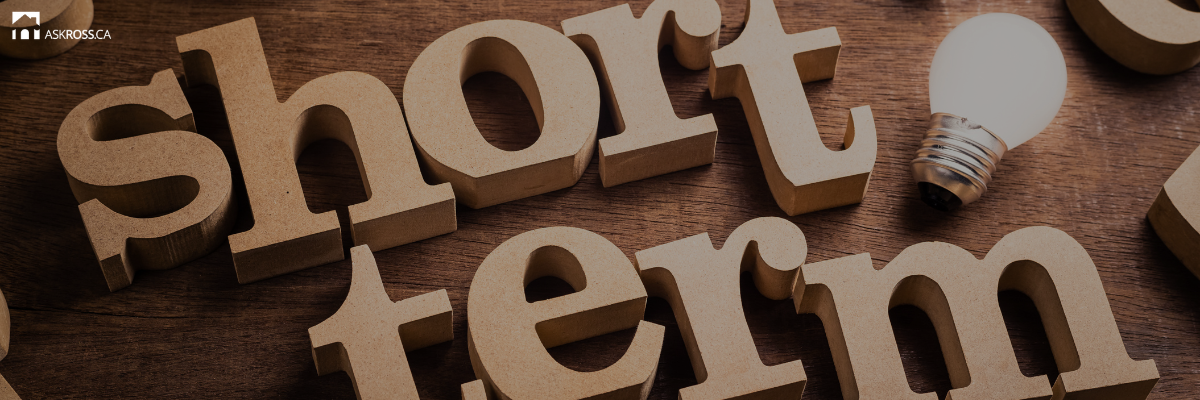
2. For Canadians who need short-term mortgages
If you know you’ll need a mortgage for only a year or two, 1- or 2-year terms are improving in value.
But be cautious, if your mortgage timeline is longer than two years, it might cost you more to renew later, especially if rates don’t fall as expected.
For non-prime borrowers with unique credit or income situations, shorter terms can still make sense, even if the rate isn’t ideal.
You’ll often have more flexibility and can revisit your options once your credit picture improves.
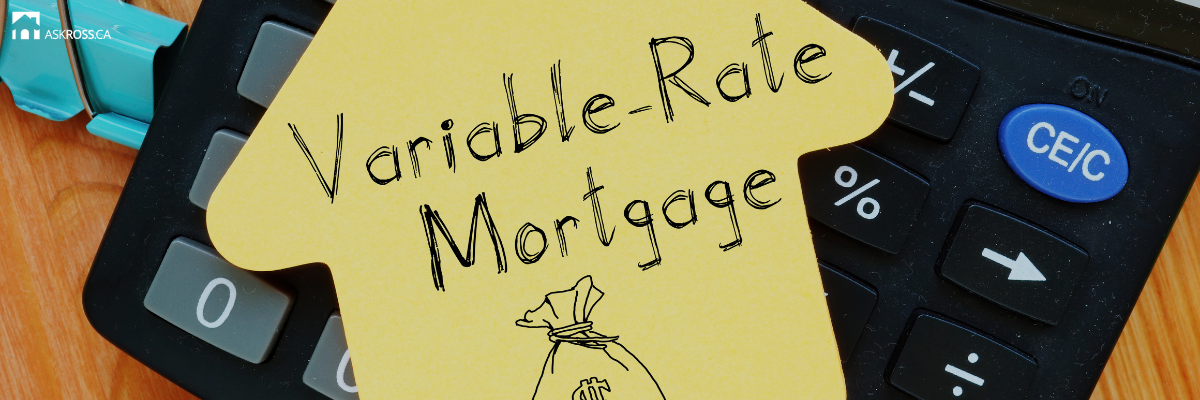
3. What if you have or want a variable-rate mortgage?
Many people choose a variable so they can exercise their right to flip a switch and convert their mortgage to a fixed rate, without paying any penalties or legal fees.
Some borrowers don’t pay much attention to the month-to-month machinations of interest rates and bond yields, while others hang on every word uttered by economists and Central Bank Governors.
And while NO-ONE can predict such matters with certainty, when you consider Mr. Macklem’s comments yesterday, there does not seem to be any reason to panic and convert to a fixed rate.
If you are already in a variable, it seems safe to stay there for now.
↑↑ Back to the list at the top ↑↑

Bottom line: Choosing a mortgage that works for you
The Bank of Canada didn’t move yesterday, but it quietly nudged the market towards a rate-cutting mindset.
Whether it follows through will depend on future economic data, especially inflation trends and how much the economy slows down.
For now, this isn’t a game-changing moment for mortgage rates.
- Fixed rates remain steady.
- Variable rates may start to drift down over the next year but don’t expect fireworks.
With so much uncertainty around tariffs, inflation, and global growth, even the Bank of Canada is working with scenarios instead of forecasts. That should tell you everything you need to know.
When the road ahead is foggy, don’t try to time the market. Instead, focus on what you can control: your budget, your timeline, and your appetite for risk.
If you want help navigating it all, reach out to us at [email protected] – we’re here to help.
↑↑ Back to the list at the top ↑↑

Ross Taylor Mortgages
If you want great service from someone you can trust – reach out to us today.
Get quick answers to your questions, no matter how difficult – 7 days a week.

 Apply For a Mortgage
Apply For a Mortgage